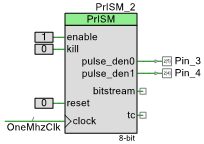X
Xenon02
Guest

Hello !
I have 24 high power LED drivers and each one of them requires independent PWM, is there any IC that has couple of independent PWM channels and I can program it using any interface ?
I have 24 high power LED drivers and each one of them requires independent PWM, is there any IC that has couple of independent PWM channels and I can program it using any interface ?




